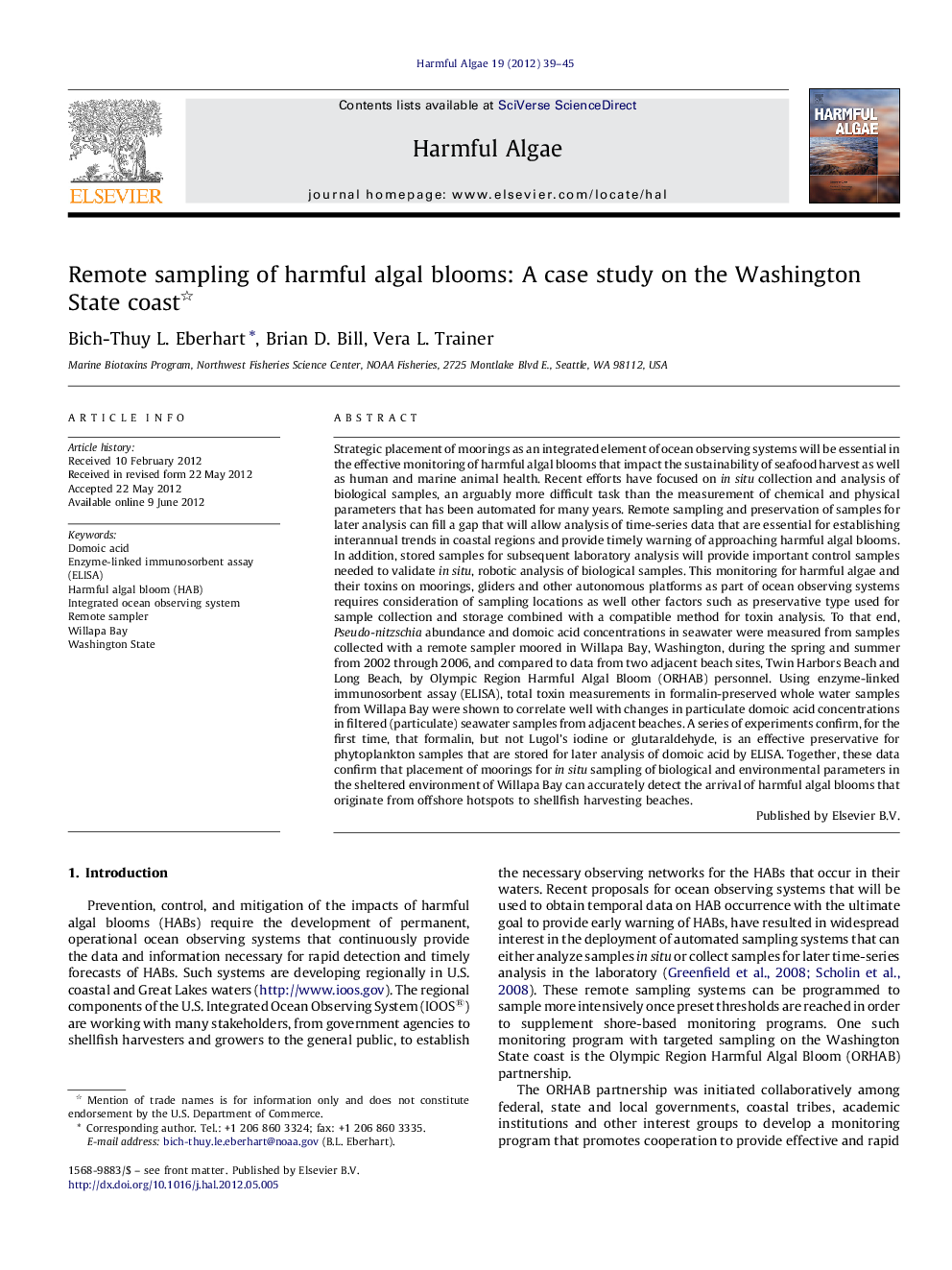| Article ID | Journal | Published Year | Pages | File Type |
|---|---|---|---|---|
| 4545512 | Harmful Algae | 2012 | 7 Pages |
Strategic placement of moorings as an integrated element of ocean observing systems will be essential in the effective monitoring of harmful algal blooms that impact the sustainability of seafood harvest as well as human and marine animal health. Recent efforts have focused on in situ collection and analysis of biological samples, an arguably more difficult task than the measurement of chemical and physical parameters that has been automated for many years. Remote sampling and preservation of samples for later analysis can fill a gap that will allow analysis of time-series data that are essential for establishing interannual trends in coastal regions and provide timely warning of approaching harmful algal blooms. In addition, stored samples for subsequent laboratory analysis will provide important control samples needed to validate in situ, robotic analysis of biological samples. This monitoring for harmful algae and their toxins on moorings, gliders and other autonomous platforms as part of ocean observing systems requires consideration of sampling locations as well other factors such as preservative type used for sample collection and storage combined with a compatible method for toxin analysis. To that end, Pseudo-nitzschia abundance and domoic acid concentrations in seawater were measured from samples collected with a remote sampler moored in Willapa Bay, Washington, during the spring and summer from 2002 through 2006, and compared to data from two adjacent beach sites, Twin Harbors Beach and Long Beach, by Olympic Region Harmful Algal Bloom (ORHAB) personnel. Using enzyme-linked immunosorbent assay (ELISA), total toxin measurements in formalin-preserved whole water samples from Willapa Bay were shown to correlate well with changes in particulate domoic acid concentrations in filtered (particulate) seawater samples from adjacent beaches. A series of experiments confirm, for the first time, that formalin, but not Lugol's iodine or glutaraldehyde, is an effective preservative for phytoplankton samples that are stored for later analysis of domoic acid by ELISA. Together, these data confirm that placement of moorings for in situ sampling of biological and environmental parameters in the sheltered environment of Willapa Bay can accurately detect the arrival of harmful algal blooms that originate from offshore hotspots to shellfish harvesting beaches.
► Willapa Bay is an important site to determine HAB event at nearby shellfish beaches. ► Toxin analysis by ELISA of preserved phytoplankton samples is reported. ► We demonstrated the effectiveness of using the autosampler in HAB monitoring in WA.
